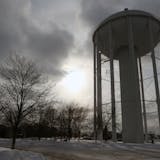In an Edina neighborhood with million-dollar homes, most people bought their houses largely because the property backed onto Minnehaha Creek. They want to see the water.
Janet Skalicky and her husband see more of the creek than they once did; part of a garden at the creek's edge washed away this spring in a flood. Another resident, Susan Brown, who planted native plants by the creek, can still see the water from her home on a hill. But a man who wanted to remain anonymous and who lives on a flat lot nearby said he mows the grass right down to some rocks at the edge of the creek. He likes it that way.
"My attitude is that the creek has been here for 10,000 years ... and doesn't seem to have changed," he said. "I live on the creek, I pay taxes on the creek, and I want to see the creek. If they plant three-foot grasses down there, I can't see the creek."
The three homeowners live along a three-quarter-mile length of creek between 54th Street and France Avenue that the Minnehaha Creek Watershed District has targeted for voluntary creek bank stabilization and improvement. The district surveyed 56 homeowners, asking them if they'd be interested in modifying their part of the stream bank if the district paid all or most of the cost. Twenty-nine households replied, with 15 saying they were interested in participating, six saying they might take part and eight saying "no."
The watershed district has since committed $345,000 to the project, estimating that perhaps 20 property owners might take part. About $100,000 to $120,000 of that amount would be devoted to design costs and in-stream habitat improvements, like the addition of rocks to create spawning spots for fish.
Next spring, designers will meet with homeowners who want to take part, creating individual plans for plantings along the creek. Buffer areas will be at least 10 feet wide and homeowners will approve the design and pick their plants. The watershed district will pay the full cost of stream bank work and native plantings, which is estimated at $10,000 to $15,000 per property.
"This is kind of a first," said Telly Mamayek, communications manager for the watershed district. "This is a great opportunity to engage homeowners. We're pleased with the response we received."
The Edina City Council gave the project its blessing last week.


